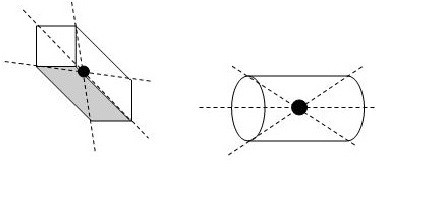Drawing the Arrows
Of the three examples given on this page, two of the forces are due to contact between the objects. In each case the arrow representing the force has been drawn in the centre of the area of contact. Gravitational forces act at a distance with no contact being necessary. These forces are always drawn as if they act at the centre of gravity, or centre of mass, of the object.

The gravitational force acting on an object due to the planet or moon whose surface it is on is known as its weight.
Weight is related to mass by the formula:
weight = mass × gravitational field strength
W = m × g
Gravitational field strength and free fall acceleration are the same physical quantity. Close to the Earth’s surface, g has the value 9.8 N kg–1 or 9.8 m s–2. In calculations, the value of 10 m s–2 is
often used as a good approximation.
Physical quantities that have direction as well as size are called vectors. Quantities with size only are scalars. Some examples are given in the table.
VECTORS / SCALARS
force / mass
velocity / speed
acceleration / length
displacement / distance
field strength / energy
When representing a vector quantity on a diagram, an arrow is always used to show its direction.
To add together two scalar quantities the normal rules of arithmetic apply, for example, 2 kg + 3 kg = 5 kg and no other answers are possible. When adding vector quantities, both the size and direction have to be taken into account.
What is the sum of a 2 N force and a 3 N force acting on the same object? The answer could be any value between 1 N and 5 N, depending on the directions involved.
